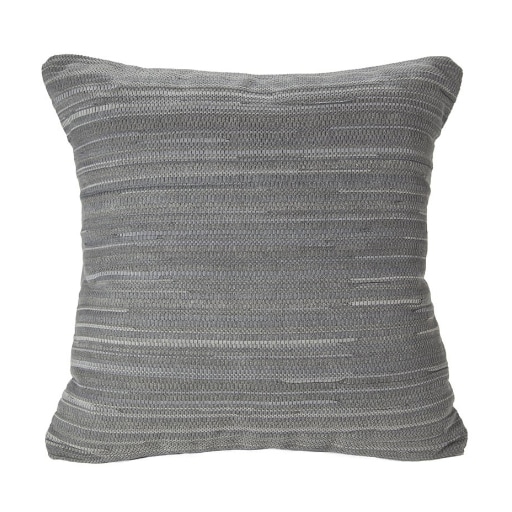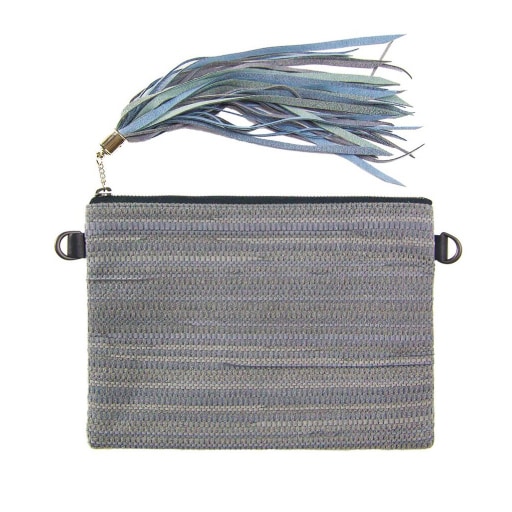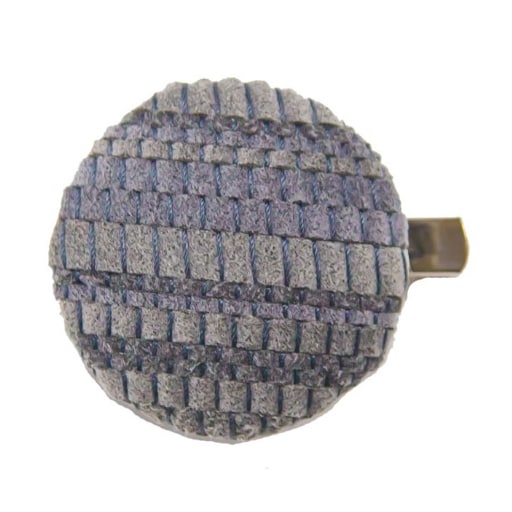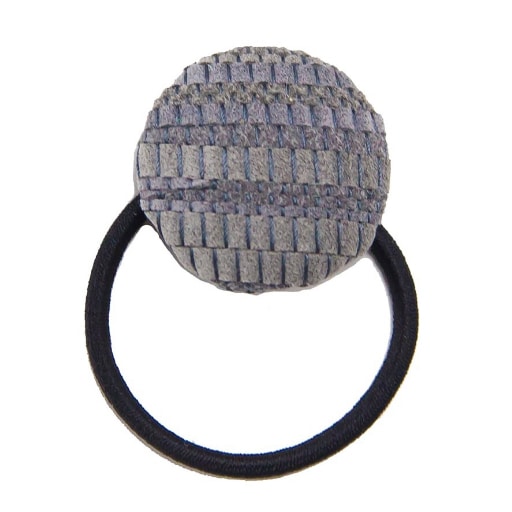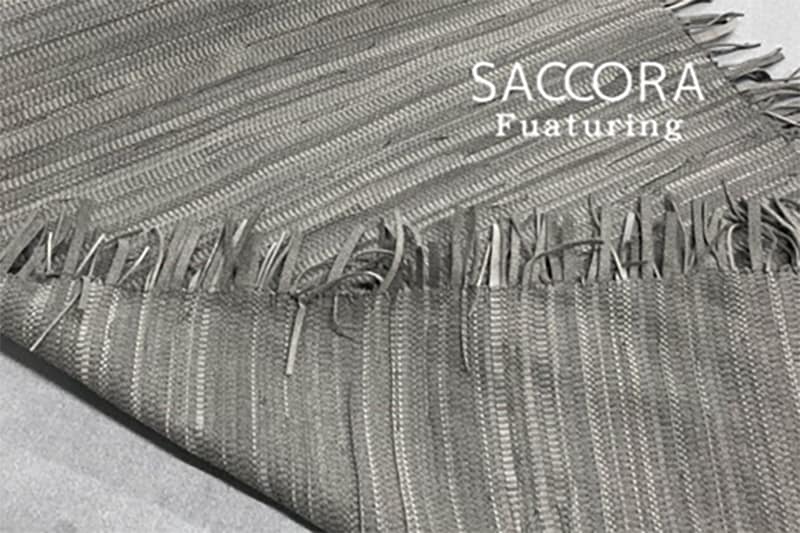Making Waste Better Working Together with SACCORA Japan
to Make Use of Ultrasuede® Offcuts
Ultrasuede® shares the mindset behind SACCORA Japan Co., Ltd.'s efforts to upcycle waste scraps using the "sakiori" technique (where torn strips of fabric are woven together into a new whole), and we have provided Ultrasuede® offcuts to SACCORA for them to use in their new and expanding 'Featuring series' product line, which showcases the possibilities for making use of fabric scraps.
Leftover bits of fabric that were destined for the trash (offcuts) are repurposed into new fabrics using sakiori, and given a new lease of life as cushions, brooches, hair-tie accessories, and pouches.
Ultrasuede® considers sustainability to be the most important issue facing the world in the 21st century, and has taken various approaches to contribute to making society carbon-neutral through responsible manufacturing.
About SACCORA
Using Sakiori to Shine a Light on What Goes to Waste
Using sakiori techniques to give new life to companies' leftover bits of fabric (offcuts). They are rejuvenating them into entirely new valuable materials.
The weaving work is handled by the SACCORA Japan team, which includes people with disabilities who have learned sakiori at places such as local support schools, and also members of sakiori clubs and associations that pass down traditional regional techniques.
Fabric that would be thrown away and traditional crafts passed down the generations. All things that it would be a waste to leave to molder away unused. SACCORA is getting involved in social innovation initiatives aimed at "making waste better"through sakiori.
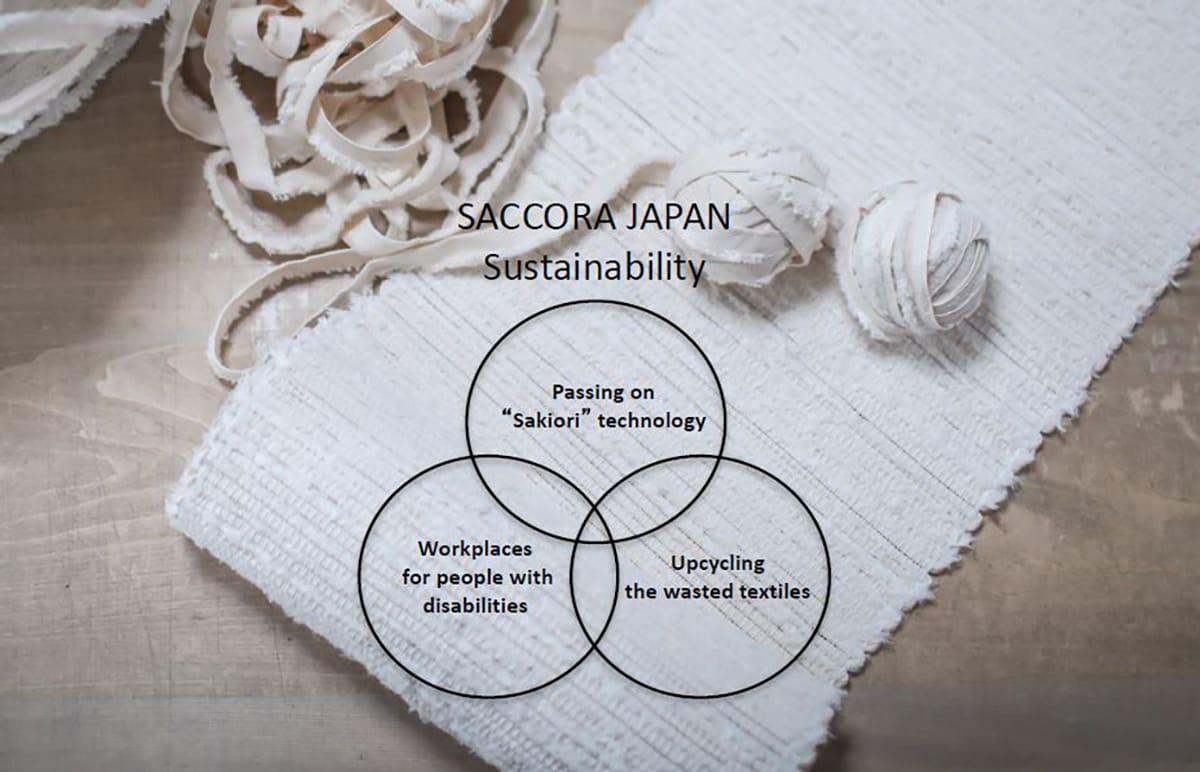
About Sakiori
Something Precious in a Culture of 'Waste Not, Want Not'
The origin of sakiori dates back to the Edo period. It is said to have come from the Tohoku region of Japan, where cotton and woven goods were highly valued due to the region's chilly climate. Sakiori techniques came to be developed as common wisdom, and as something precious in a culture of 'waste not, want not.' At the time, the clothes, futons, and other such fabric items used in everyday life were torn up into slender strands and twisted together to weave them into a fabric.
A Well Designed Material That Is Considerate to the Environment
Textile products have become more accessible in recent years, and sakiori isn't woven much anymore. However, its unique texture and artistry and use of old fabrics and offcuts (left-over fabric) have garnered attention, and it's getting a second look as a well designed material that is considerate to the environment. It's not simply a recycling technology: the fabric is also woven with feelings of affection and care.
Woven Together with Love
Most of the sakiori process is done by hand. The fabric is split into thin, horizontal 'weft' threads and then woven through the lengthwise 'warp' of the weave, pick by pick, using a loom. By doing this by hand, the weaver's feeling of love is woven into the fabric, producing a unique, warm texture that a machine just couldn't express.
